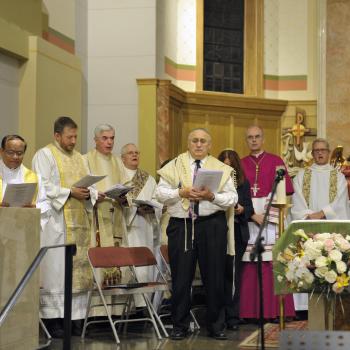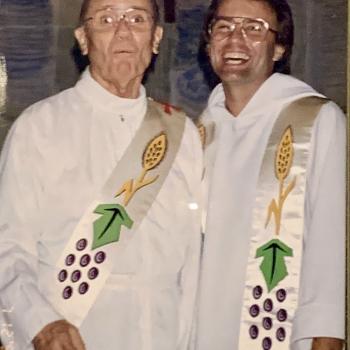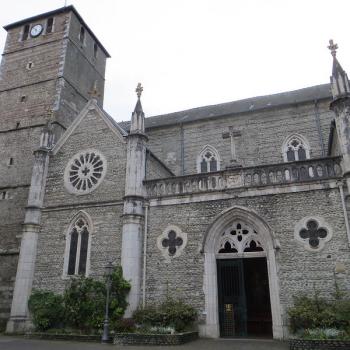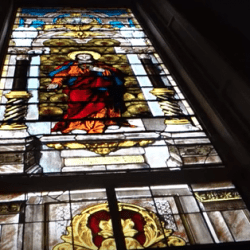Some churches go all out to cover statues and crosses before Holy Week; others do hardly anything at all.
The New Theological Movement has an interesting explanation:
We will reproduce here the historical study offered by Fr. Edward McNamara, professor of liturgy at the Regina Apostolorum Pontifical University (taken from Zenit):
“It probably derives from a custom, noted in Germany from the ninth century, of extending a large cloth before the altar from the beginning of Lent. This cloth, called the ‘Hungertuch’ (hunger cloth), hid the altar entirely from the faithful during Lent and was not removed until during the reading of the Passion on Holy Wednesday at the words ‘the veil of the temple was rent in two.’ “Some authors say there was a practical reason for this practice insofar as the often-illiterate faithful needed a way to know it was Lent. Others, however, maintain that it was a remnant of the ancient practice of public penance in which the penitents were ritually expelled from the church at the beginning of Lent. After the ritual of public penance fell into disuse — but the entire congregation symbolically entered the order of penitents by receiving ashes on Ash Wednesday — it was no longer possible to expel them from the church. Rather, the altar or ‘Holy of Holies’ was shielded from view until they were reconciled to God at Easter. “For analogous motives, later on in the Middle Ages, the images of crosses and saints were also covered from the start of Lent. The rule of limiting this veiling to Passiontide came later and does not appear until the publication of the Bishops’ Ceremonial of the 17th century.”
We would like to propose another possibility, one which need not conflict with any of those give above. It may be possible that the Church covers the images of the Cross during these days, for the same reason that she refrains from offering the Sacrifice of the Mass on Good Friday. Namely, in this time in which we mystically enter into the historical realities of Jesus’ final days, it is not fitting to have the image, sign or sacrament of the Cross presented to the faithful.












